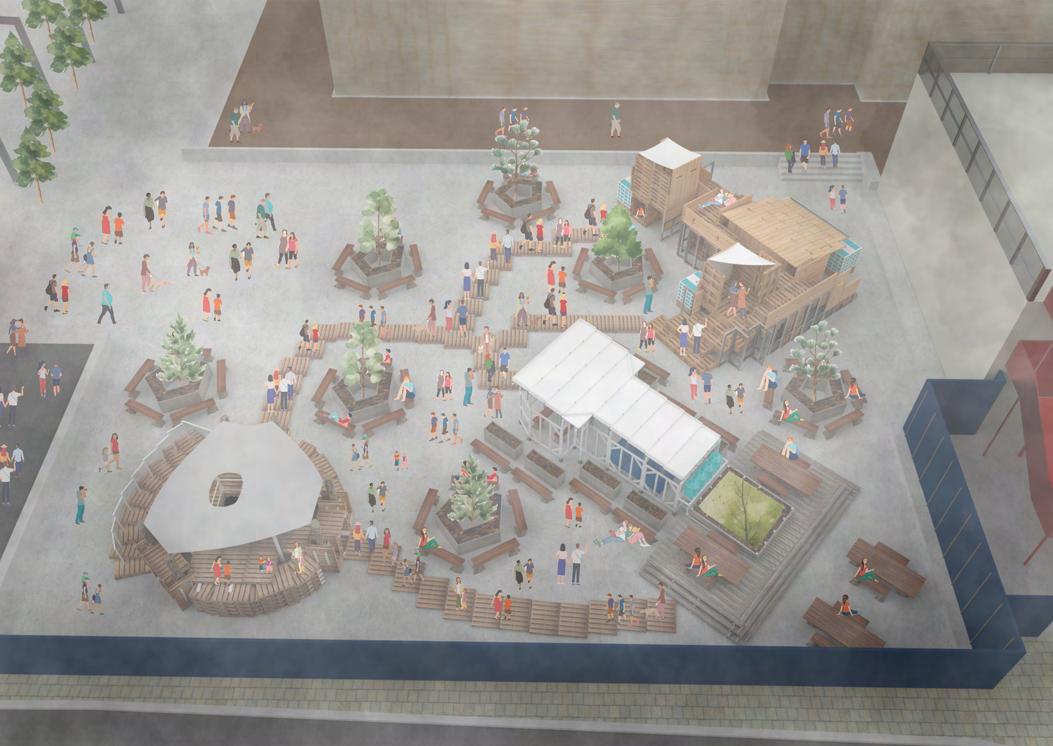
4 minute read
The Music Garden Live Build Group Project
Y2.S2 Project (2025)
The site for this project is located in Hacney Wick, a post-industrail location transforming within East London and charaterized by its dynamic cultural experience and transforming potential, the project entails the Quebec Way near the Paper Garden that’s full of social possibility. The proposal entails a temporary music theatre that links three adjecent buildings by music performances, plays and informal gatherings.
Developed within a live studio brief, the project was part of a semester long collaboration in which students converted their own designs into collective proposals from one of three themes: Children, Mental Health, and Entertainment. The group that I was part of, which was centred on entertainment due to the client wanting a semi public space that promted interaction between the neighbousing spaces.
The client placed certain strictures: not to exceed 3 metre height to prevent planning classification, to be from wholly reclaimed sources, to take five days to build, and to contain minimum 1.5 square metre store plus self-contained water harvesting system to mitigate flood risk. The final pavilion employs white timber trusses, recycled plastics, and translucent polycarbonate, by traditional joinery to draw focus on its transitoriness. Rainwater runs off planted beds to recycled tank, sustaining greenery and accentuating the project’s environmental values.
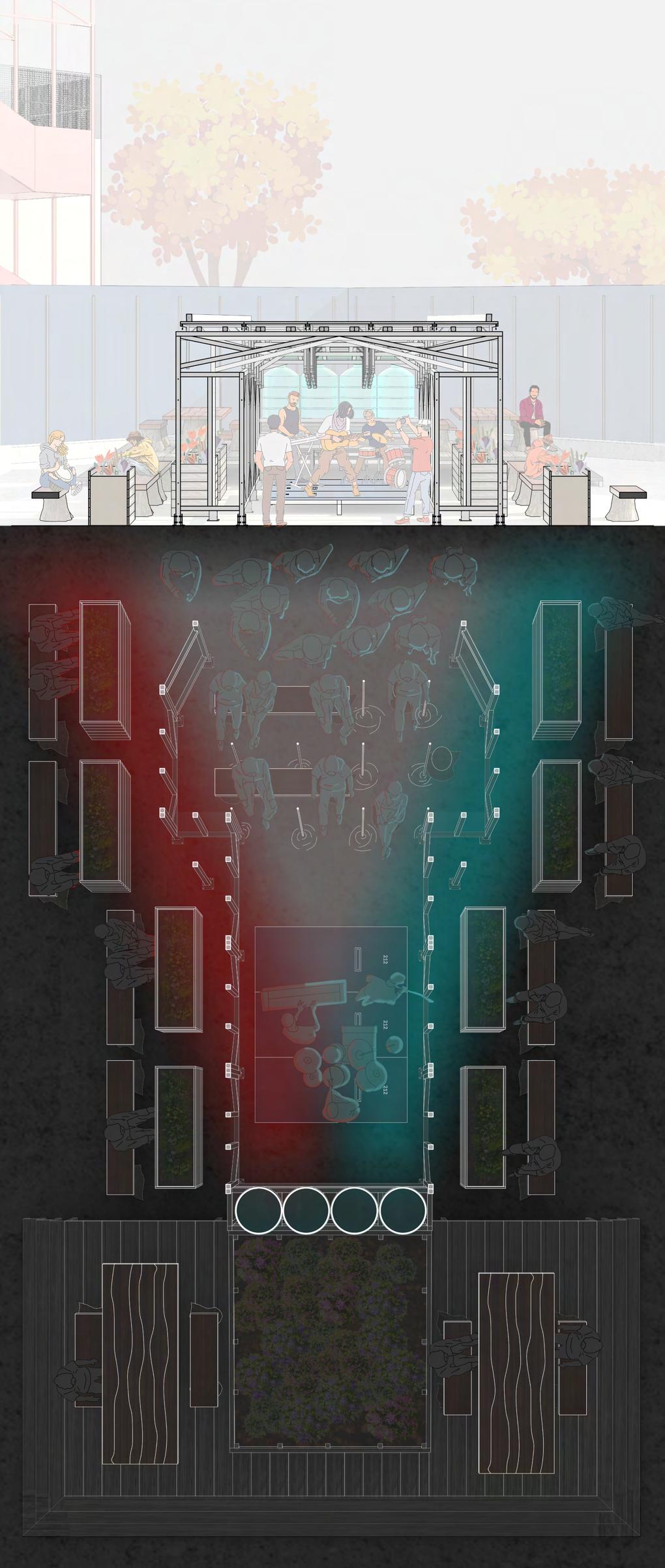

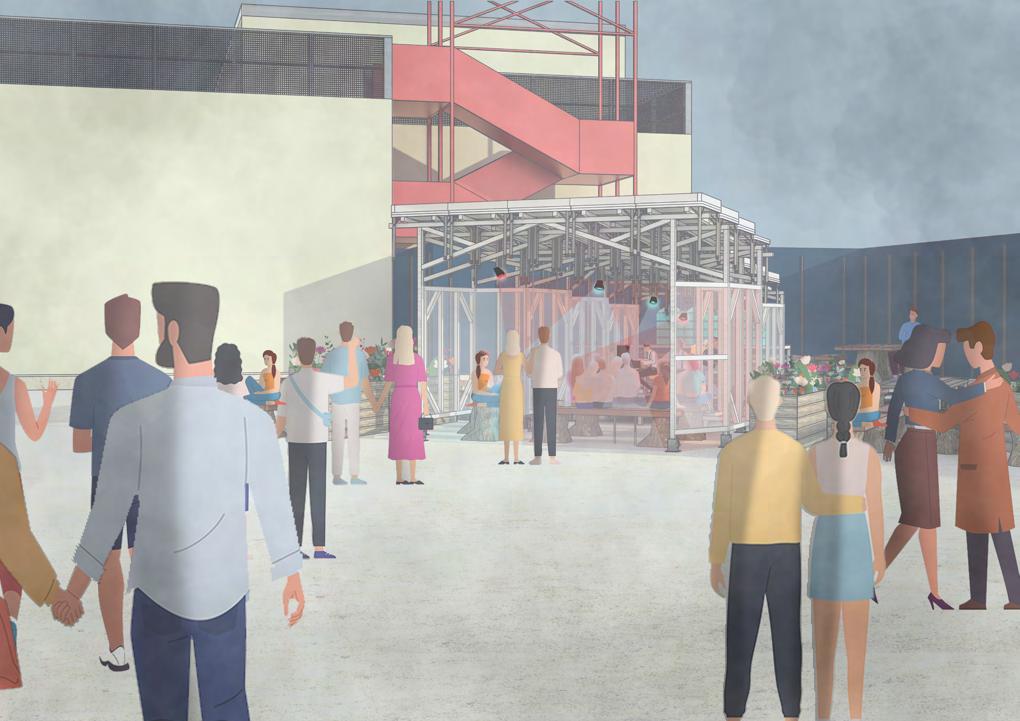


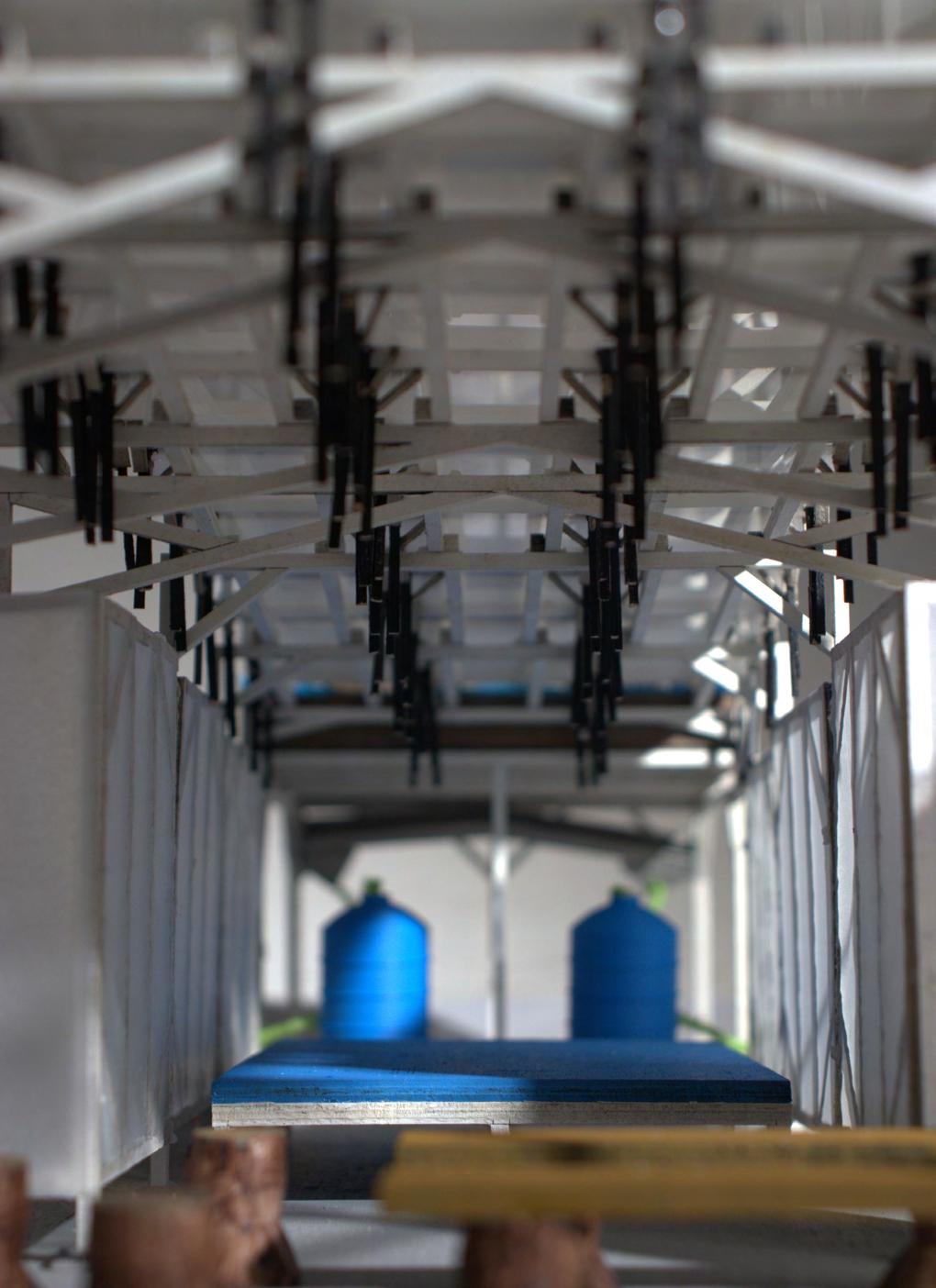
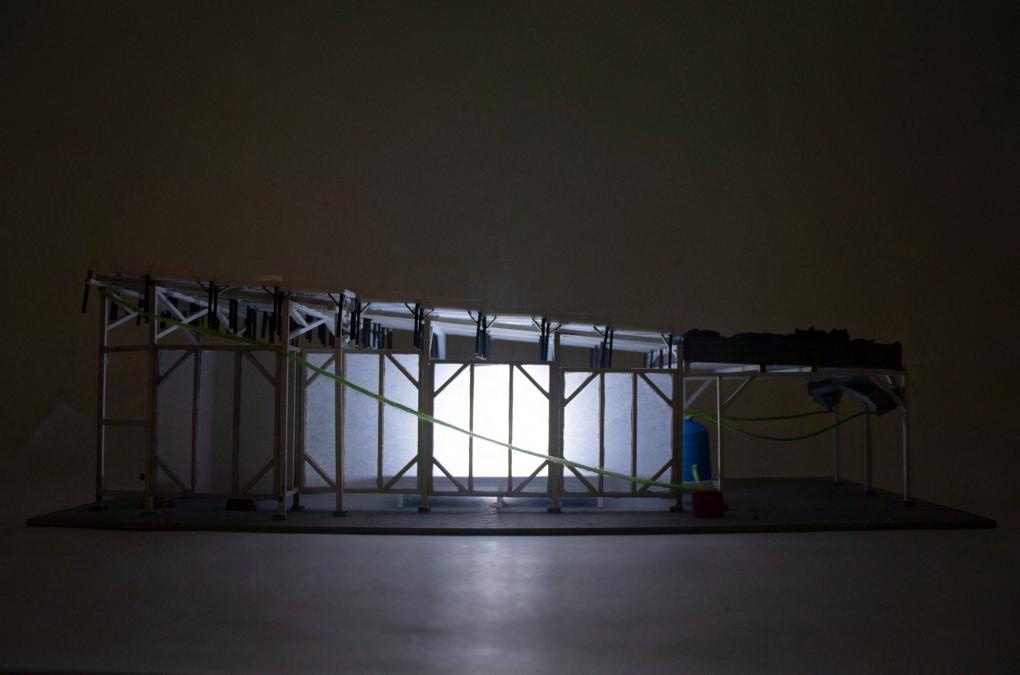
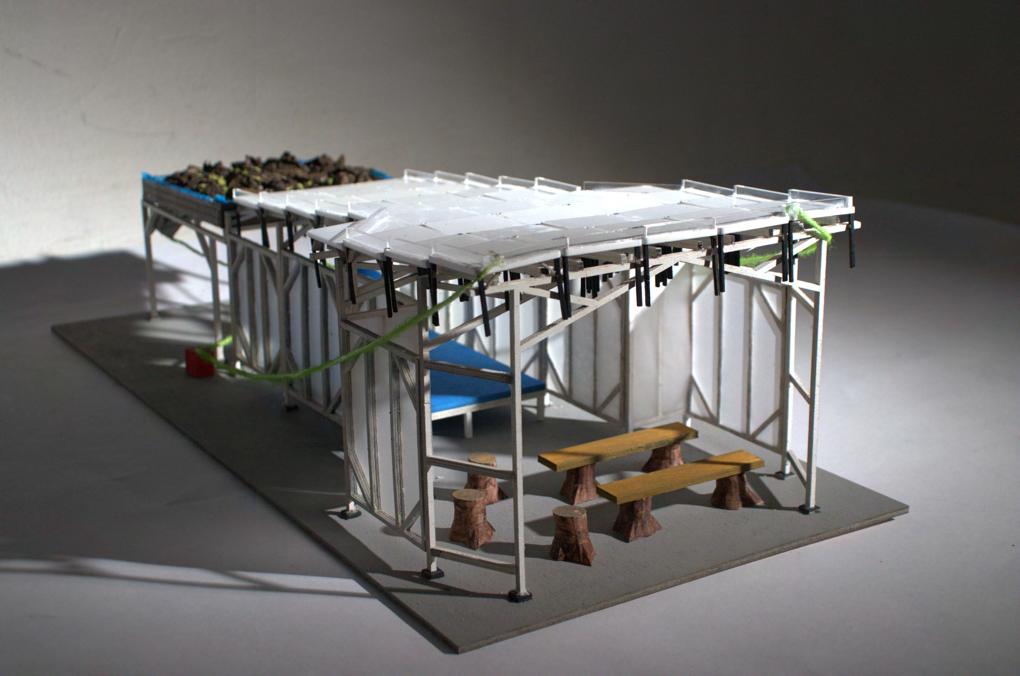



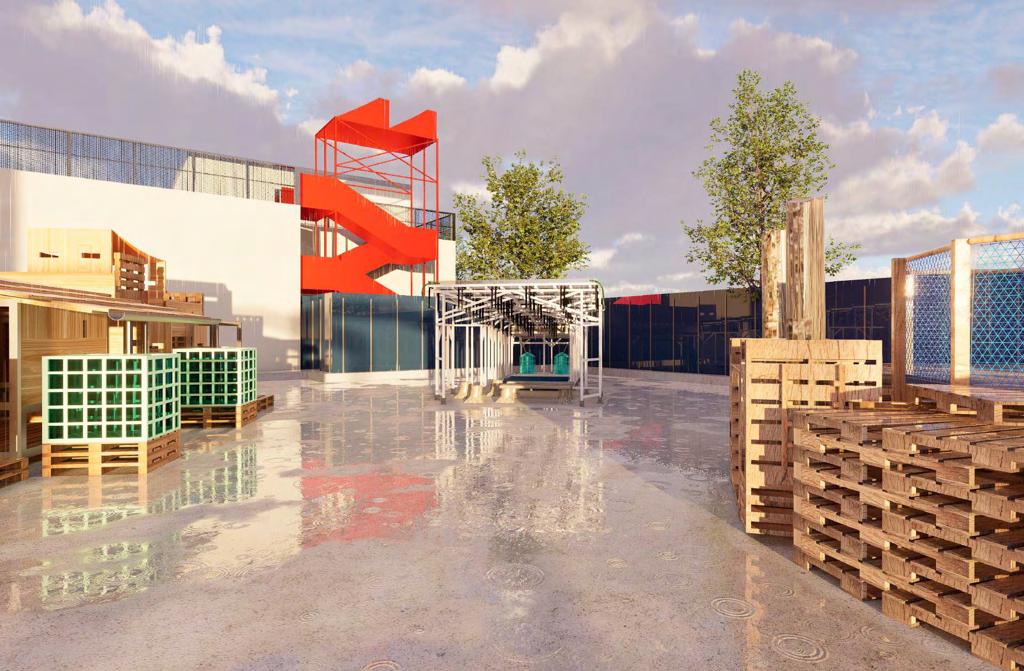
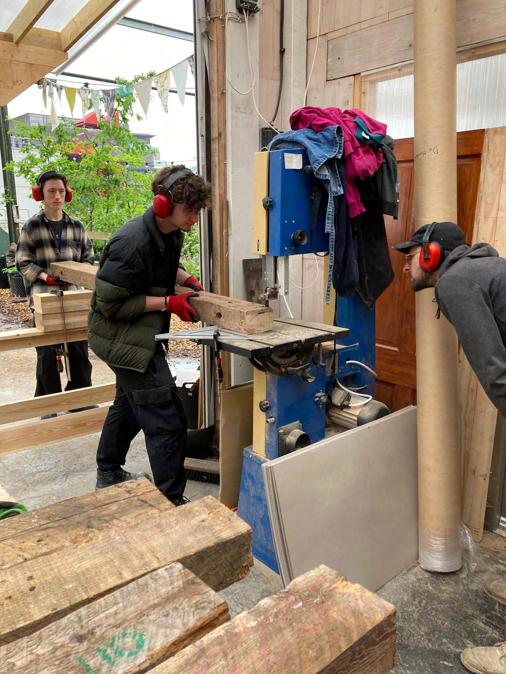
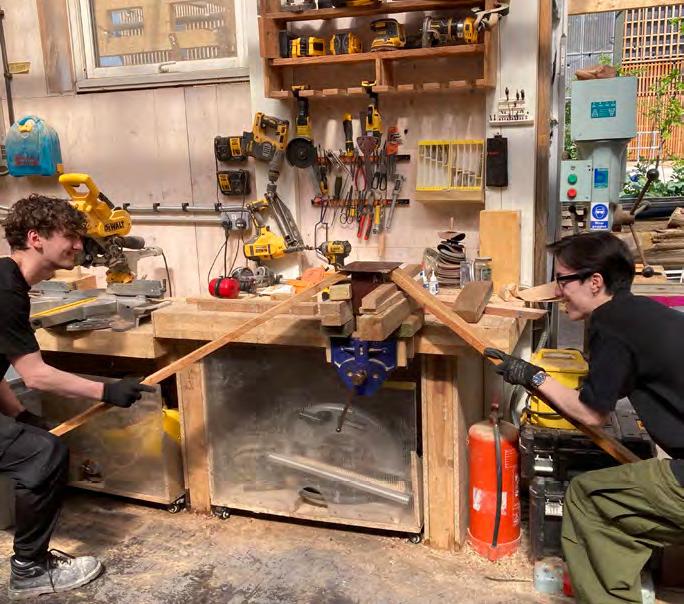



The False Banana Plant Community Bakery
Y1.S2 Project (2025)
This project explores food, sustainability, and community through the design of a bakery in Hackney Wick, near Mossbourne Riverside Academy and the River Lea.
Responding to the environmental impacts of industrial food systems, the proposal centers on the false banana plant a sustainable crop grown on-site. Its fibrous leaves are used to make bread, promoting low-impact, locally sourced food production. The design encourages a reconnection between people, food, and place. The ground floor hosts the bakery, cooking areas, and seating spaces, with clear connections to outdoor growing plots and public walkways. These areas invite visitors families, students, and passersby to engage with food in both social and educational ways. A dedicated teaching space enables schoolchildren from the nearby academy to learn about growing, cooking, and sustainability firsthand. The second floor includes a modest residence for the proprietor, fulfilling the brief’s call for on-site accommodation. Materially, the project embraces a community-driven construction process, using easily assembled structural elements and natural materials that reflect the ecological and social values of the scheme. Through experimental design, regenerative planting, and public participation, the bakery becomes more than a shop it becomes a local hub for nourishment, resilience, and shared knowledge.

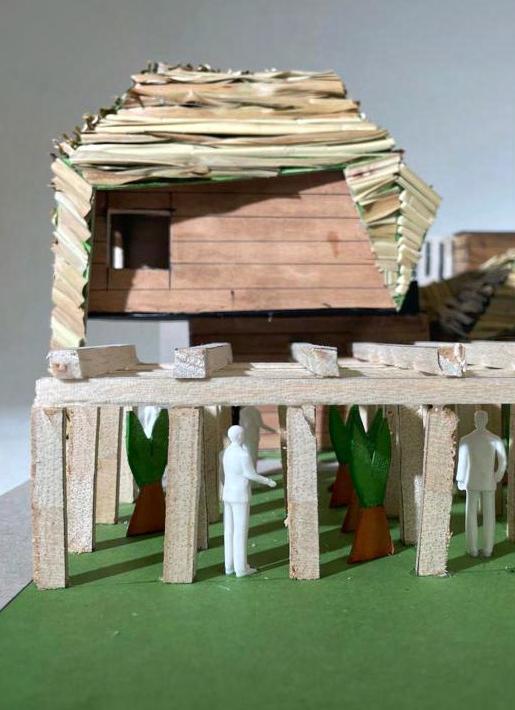

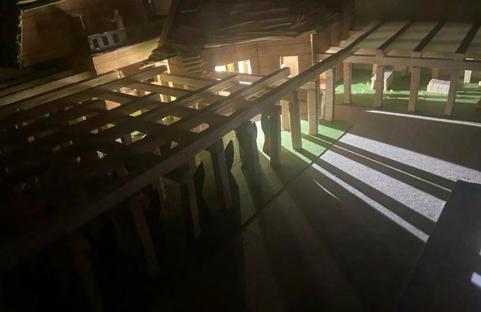
The Practice
2 Week Internship
Y3.S1 PS3 (2025)
During my two-week placement at Cornish Architects in September 2024, I had the chance to properly immerse myself in real-world architectural work. I helped develop planning permission drawings for the Big Yellow Storage project in Leicester, which gave me a solid understanding of how technical drawings are prepared and submitted for approval. I also worked on environmental investigation diagrams for the Hawley Lane project in Farnborough, analysing the site and its surroundings to support the early stages of design. One of the most valuable moments was a site visit, where I got to see how designs take shape on the ground. I wrote a report afterwards, reflecting on everything from material choices to spatial layout and how the building responded to its environment. It helped me think more critically about design decisions beyond the screen.
Throughout my time there, I became more confident using Revit, AutoCAD, Photoshop, and InDesign, and felt myself improving in how I communicate ideas within a team. The experience really opened my eyes to the realities of practice the pace, the teamwork, the problem-solving—and made me even more passionate about creating architecture that responds to place, people, and the environment in meaningful ways.





